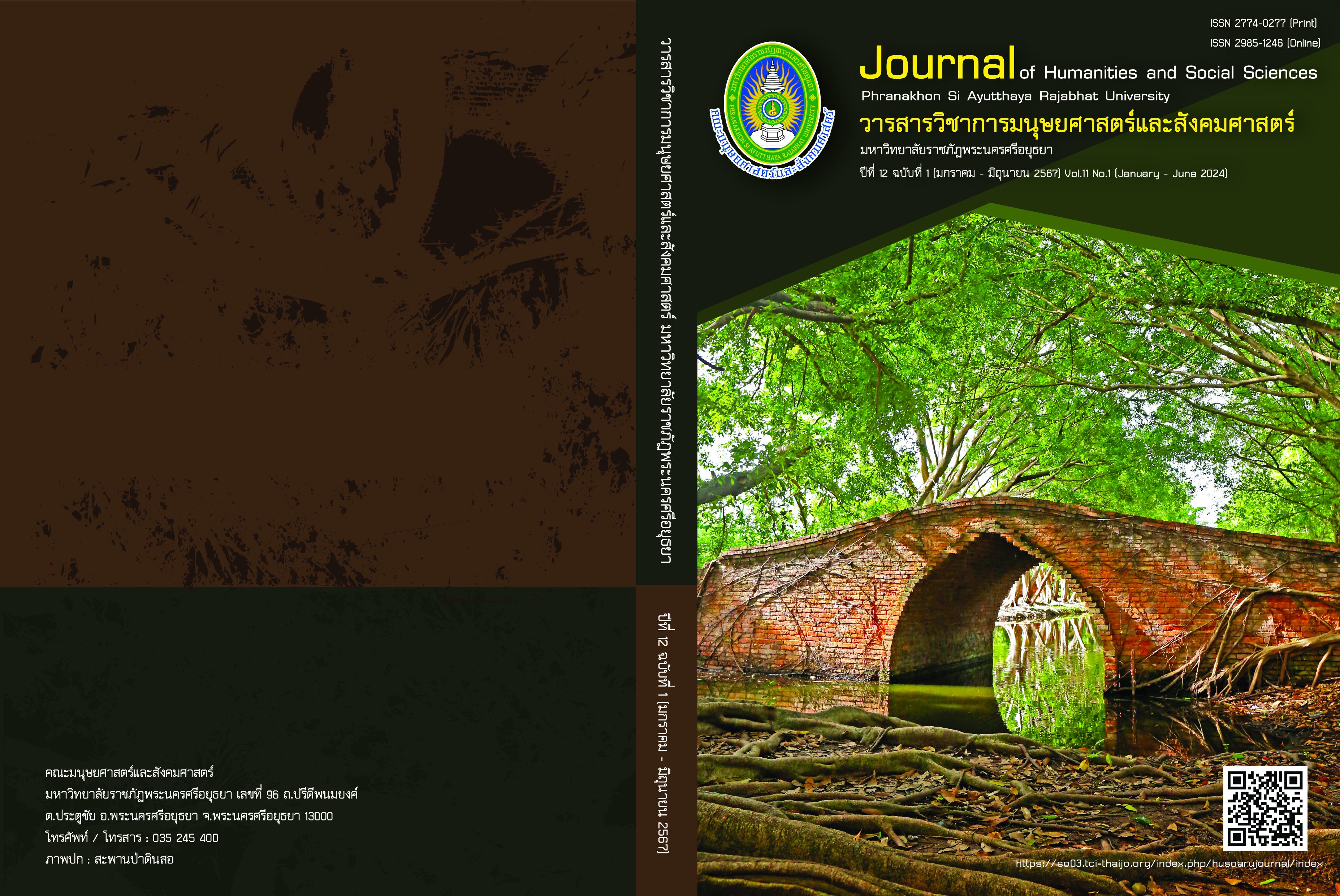ทฤษฎีผัสสารมณ์กับแนวทางและความเป็นไปได้ในการศึกษาวิดีโอ ASMR
Main Article Content
บทคัดย่อ
แนวคิดเกี่ยวกับผัสสารมณ์ (Affect) ได้ขยายออกไปอย่างกว้างขวางมีทั้งในแง่ที่หมายถึง กระบวนการ (Process) และพลัง (Force) จากการกลับไปหาแนวคิดของ Spinoza ที่ให้ความสำคัญกับทั้ง Affectus กับ Affectio โดยขยายขอบเขตไปไกลกว่าอารมณ์ (Emotion) และความรู้สึก (Feeling) เพื่อที่จะอธิบายพลังที่นำไปสู่การแสดงออกในรูปแบบที่หลากหลายไปจนถึงการไม่แสดงออกถึงอะไรเลย ข้อมูลที่ได้จากงานศึกษาเกี่ยวกับ ASMR โดยใช้แนวคิดเกี่ยวกับผัสสารมณ์ที่ผู้เขียนได้ทำการทบทวนวรรณกรรมได้ชี้ให้เห็นว่า ASMR เป็นพื้นที่ซึ่งเหลื่อมซ้อนกันของอารมณ์ ความรู้สึกและผัสสารมณ์ ทั้งยังแสดงให้เห็นว่า ASMR มีความสัมพันธ์กับอารมณ์ความรู้สึกที่สัมพันธ์กับความใกล้ชิด และการดูแลเอาใจใส่สามารถเชื่อมโยงไปถึงประเด็นที่เกี่ยวข้องกับเรื่องเพศ งานศึกษาเหล่านี้แสดงให้เห็นถึงความเป็นไปได้ของการนำเอาทฤษฎีผัสสารมณ์ (Affect theory) ไปใช้ในการอธิบายปรากฏการณ์ทางสังคมที่เกี่ยวข้องกับการตอบสนองของประสาทรับความรู้สึกอัตโนมัติ (Autonomous Sensory Meridian Response: ASMR) ทั้งในด้านที่เป็นปฏิกิริยาอัตโนมัติของร่างกาย ซึ่งเกิดก่อนการรู้คิดไม่สามารถอธิบายถึงต้นสายปลายเหตุได้ เนื่องจากเกิดขึ้นโดยไม่รู้ตัว รวมถึงอารมณ์ความรู้สึก ประสบการณ์ต่าง ๆ ที่เกิดขึ้นกับบุคคลจากการได้รับการกระตุ้น ASMR ที่เกิดขึ้นในขณะที่เกิดขึ้นโดยรู้ตัว มีความสัมพันธ์กับความหมาย ภาพตัวแทน และอัตลักษณ์ที่เกี่ยวข้องกับบุคคล ทำให้ผู้เขียนพบว่าทฤษฎีผัสสารมณ์จะเป็นตัวนำทางในการทำความเข้าใจปรากฏการณ์และความนิยม เรื่องราวเกี่ยวกับประสบการณ์ อารมณ์และความรู้สึกที่เกี่ยวข้องกับการบริโภควิดีโอ ASMR ของผู้คนในสังคมไทยได้เป็นอย่างดี
Article Details

อนุญาตภายใต้เงื่อนไข Creative Commons Attribution-NonCommercial-NoDerivatives 4.0 International License.
บทความที่ได้รับการตีพิมพ์เป็นลิขสิทธิ์ของ คณะมนุษยศาสตร์และสังคมศาสตร์ มหาวิทยาลัยราชภัฏพระนครศรีอยุธยา
ทัศนะและความคิดเห็นที่ปรากฏในบทความในวารสารฯ ถือเป็นความรับผิดชอบของผู้เขียนบทความ และไม่ได้เป็นทัศนะและความรับผิดชอบของ กองบรรณาธิการ หรือ ของ มหาวิทยาลัยราชภัฏพระนครศรีอยุธยา
เอกสารอ้างอิง
ชัยรัตน์ พลมุข. (2562). ทฤษฎีผัสสารมณ์ (affect theory) กับการศึกษาวรรณกรรม. ใน สุรเดช โชติอุดมพันธ์ (บรรณาธิการ), นววิถี: วิธีวิทยาร่วมสมัยในการศึกษา วรรณกรรม. (น.323-372). สยามปริทัศน์.
ชูศักดิ์ ภัทรกุลวณิชย์. (2546). เชิงอรรถวัฒนธรรม (พิมพ์ครั้งที่ 2). วิภาษา. ไชยรัตน์ เจริญสินโอฬาร. (2562). บทนำ การสร้างการรับรู้ในสังคมไทย: อารมณ์ ความรู้สึกนึกคิด แอฟเฟ็คท์. ใน ไชยรัตน์ เจริญสินโอฬาร (บรรณาธิการ), การสร้างการรับรู้ในสังคมไทย เล่ม 2 อารมณ์ ความรู้สึกนึกคิด แอฟเฟ็คท์. ภาพพิมพ์.
วริณาฐ พิทักษ์วงศ์วาน และโกสุม โอมพรนุวัฒน์. (2565). ความฉาบฉวยในโลกออนไลน์กับการกลายเป็นวัตถุทางศิลปะในหอจัดแสดงพิพิธภัณฑ์กรณีศึกษา นิทรรศการ ASMR “WEIRD SENSATION FEELS GOOD”. ใน เทียมสูรย์ สิริศรีศักดิ์ (บรรณาธิการ), พิพิธภัณฑ์และมรดกวัฒนธรรม: รวมบทความคัดสรรจากโครงการประชุมวิชาการ พิพิธภัณฑ์และมรดกวัฒนธรรม ครั้งที่ 2 (น.60-90). พิพิธภัณฑ์ธรรมศาสตร์เฉลิมพระเกียรติ คณะสังคมวิทยาและมานุษยวิทยา มหาวิทยาลัยธรรมศาสตร์.
Anable, A. (2018). Playing with feelings: Video games and affect. University of Minnesota Press.
Andersen, J. (2014). Now you've got the shiveries: Affect, intimacy, and the ASMR whisper community. Television & New Media, 16(8).
Athanasiou, A., Hantzaroula, P., & Yannakopoulos, K. (2008). Towards a new epistemology: The "affective turn". Historein, 8, 5-16.
Barratt, E. L., & Davis, N. J. (2015). Autonomous sensory meridian response (ASMR): A flow-like mental state. PeerJ, 3, e851.
Clough, P. T. (2008). The affective turn: Political economy, biomedia and bodies. Theory, Culture & Society, 25(1), 1–22.
Deleuze, G. (1978). Gilles Deleuze, lecture transcripts on Spinoza’s concept of affect. Goldsmiths, University of London. https://www.gold.ac.uk/media/images-by-section/departments/research-centres-and-units/research-centres/centre-for-invention-and-social-process/deleuze_spinoza_affect.pdf
Doss, E. (2009). Affect. American Art, 23(1), 9–11.
Fei, D. (2020). From ‘the mind isolated with the body’ to ‘the mind being embodied’: Contemporary approaches to the philosophy of the body. Cultures of Science, 3(3), 206-219.
Gallagher, R. (2016). Eliciting euphoria online: The aesthetics of “ASMR” video culture. Film Criticism, 40(2),
Grossberg, L. (1992). We gotta get out of this place: Popular conservatism and postmodern culture. Routledge.
Hipfl, B. (2018). Affect in media and communication studies: Potentials and assemblages. Media and Communication, 6(3), 5-14.
Koster, H. W. (2021). The effect of affect: An ethnographic exploration of the commodification and sexualization of affect through the lens of the ASMR community [Master's thesis]. Utrecht University.
Massumi, B. (1987). Notes on the translation and acknowledgments. In G. Deleuze, & F. Guattari (Eds.), A thousand plateaus: Capitalism and schizophrenia (B. Massumi, Trans., pp.xvi–xix). University of Minnesota Press.
Massumi, B. (1995). The autonomy of affect. Cultural Critique, 31, 83–109.
Massumi, B. (2002). Parables for the virtual: Movement, affect, sensation. Duke University Press.
Massumi, B. (2003). The archive of experience. In Information is alive. V2_. https://v2.nl/publishing/information-is-alive
Massumi, B. (2015). Politics of affect. Polity.
Massumi, B., Ferrington, J., Hechler, A., & Parsons, J. (2019). Affect and immediation: An interview with brian massumi. disClosure: A Journal of Social Theory, 28.
Okaywhatever51838. (n.d.). Weird sensation feels good. Steady Health. https://www.steadyhealth.com/topics/weird-sensation-feels-good
Ott, B. L. (2017). Affect. In Oxford Research Encyclopedia of Communication (pp.1-26). Oxford University Press.
Poerio, G. L., Blakey, E., Hostler, T. J. & Veltri, T. (2018). More than a feeling: Autonomous sensory meridian response (ASMR) is characterized by reliable changes in affect and physiology. PloS ONE, 13(6), e0196645.
Schaefer, D. O. (2019). The evolution of affect theory: The humanities, the sciences, and the study of power. Cambridge University Press.
Shouse, E. (2005). Feeling, emotion, affect. M/C Journal, 8(6).
Slaby, J., & von Scheve, C. (2019). Introduction: Affective societies–key concepts. In Affective societies (pp.1-24). Routledge.
Smith, N., & Snider, A. M. (2019). ASMR, affect and digitally mediated intimacy. Emotion, Space and Society, 30, 41-48.
Waldron, E. L. (2017). “This FEELS SO REAL!” sense and sexuality in ASMR videos. First Monday, 22(1).


